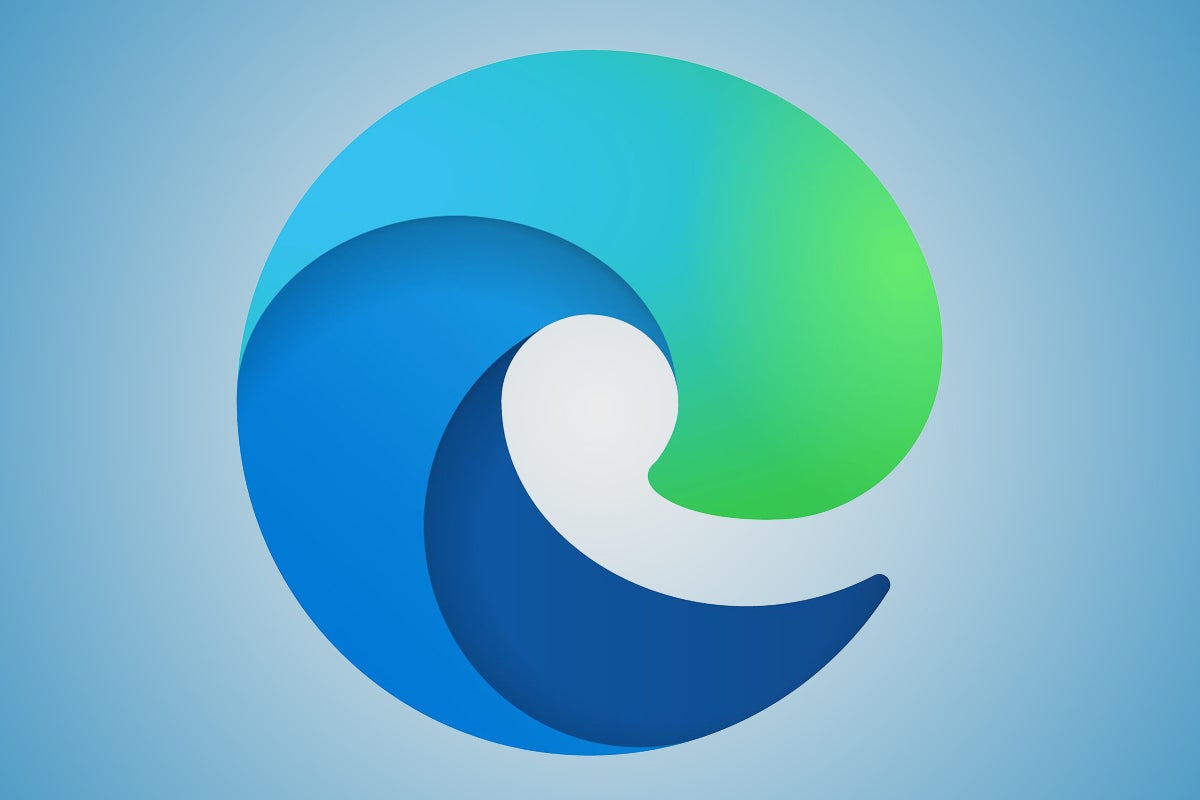Microsoft has been struggling to get people to use its Edge browser for years. Even though the company made Edge the default browser in Windows 10, users left in droves, most of them flocking to Google Chrome — and with good reason. The original version of Edge was underpowered, had difficult-to-use features, and offered very few extensions compared to Chrome and Firefox.
But in January 2020, Microsoft launched a new version of Edge that’s based on the same technologies that drive Chrome. The new Edge is a much better browser, and there are compelling reasons to use it. (The new Edge is the only one that’s ever been offered in Windows 11.) But you might still prefer to use Chrome, Firefox, or one of the many other browsers out there.
Note that even if you’ve previously set up another browser to be your default, it might have been changed since then. When there’s a major Windows 10 or Windows 11 upgrade, the upgrade recommends switching to Edge, and you might have inadvertently made the switch.
Whatever the reason, if Edge is your default browser in Windows 10 or 11, it’s easy to switch to the browser of your choice. As I’ll show you, it only takes a few minutes.
The instructions in this article assume that you’ve installed either Windows 10 version 22H2 or Windows 11 version 22H2, the most recent version of each. If you’re using an earlier version, the screens you see may vary somewhat from what you see here.
Why you might want to stick with Edge
It’s probably worth at least trying out Edge. The browser offers a clean design with intuitive features. The biggest drawback to the old Edge was its paltry selection of browser extensions, but because the new Edge uses the same rendering engine as Chrome, it can run Chrome extensions, which number in the thousands. And unlike Chrome, Edge offers tracking prevention, which blocks ad providers from tracking you from website to website.
In my tests, Edge also feels faster than Chrome and uses less RAM. And it has some interesting features worth trying, such as the ability to launch a website as if it’s an app.
And then, of course, there’s the Bing generative AI chatbot, which has been integrated into Edge via a right-hand pane. Chrome has a genAI chatbot as well, Bard, but you may prefer Bing’s, which has been around for a longer time.
All that said, you might not be interested in trying out the new Edge, or you might try it and decide you still prefer Chrome, Firefox, or another browser. You may, for example, like Firefox’s ability to alert you when a website covertly uses your computer’s processor to mine cryptocurrency in the background, without your knowledge. Or you might like the way Chrome’s Omnibox (the place you type URLs and searches) can do things like perform math functions, convert currencies, or answer questions such as naming the capitals of US states without having to search the internet.
If you want to use another browser as your default, here’s what to do.
How to designate another browser as your default
The first thing you need to do to switch to another browser as your default is to install the other browser on your system. What you do next depends on whether you use Windows 10 or Windows 11.
Changing the default browser in Windows 10
If you’re using Windows 10, click the Start button and then click the Settings icon that appears on the left-hand side of the screen. (It looks like a little gear.) You can alternatively type settings into the search box and click the Settings result that appears at the top of the screen.
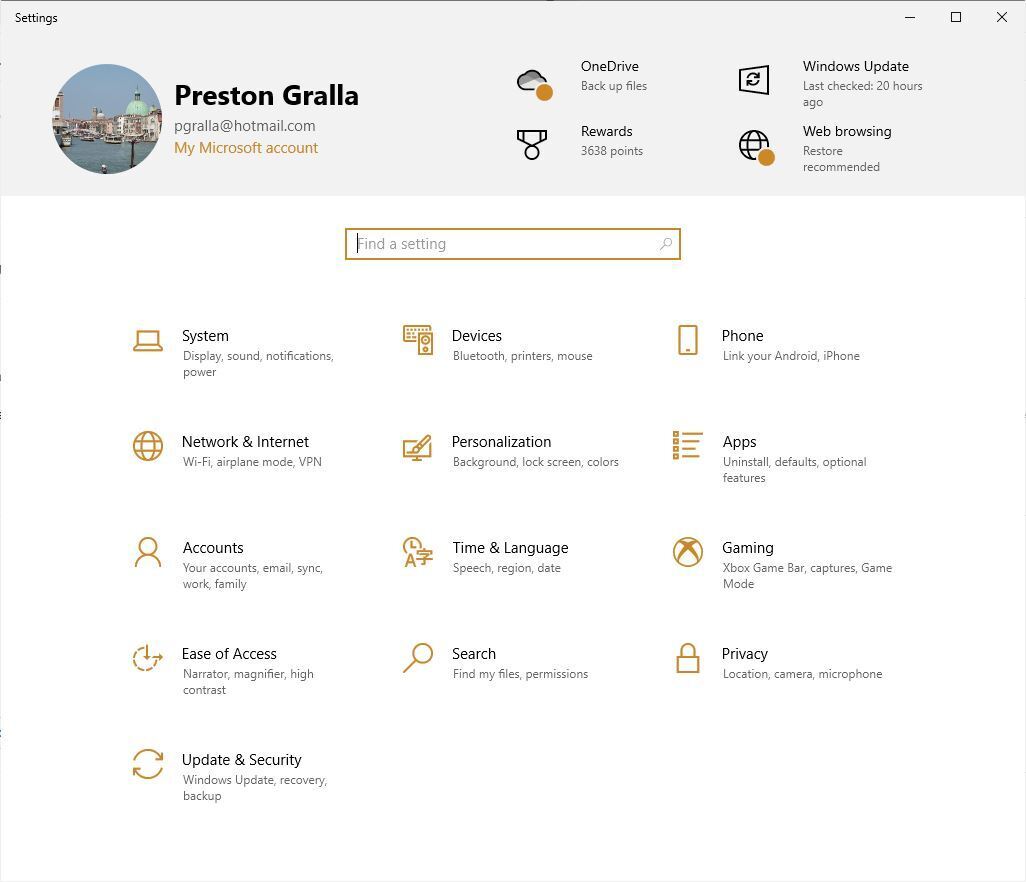 IDG
IDGTo change your default browser in Windows 10, start in the Settings app.
In the Settings app, select Apps > Default apps. The “Default apps” screen appears. It shows the default apps for email, maps, playing music and videos, viewing photos, and more. To change the default browser, you’ll have to scroll down toward the bottom of your screen.
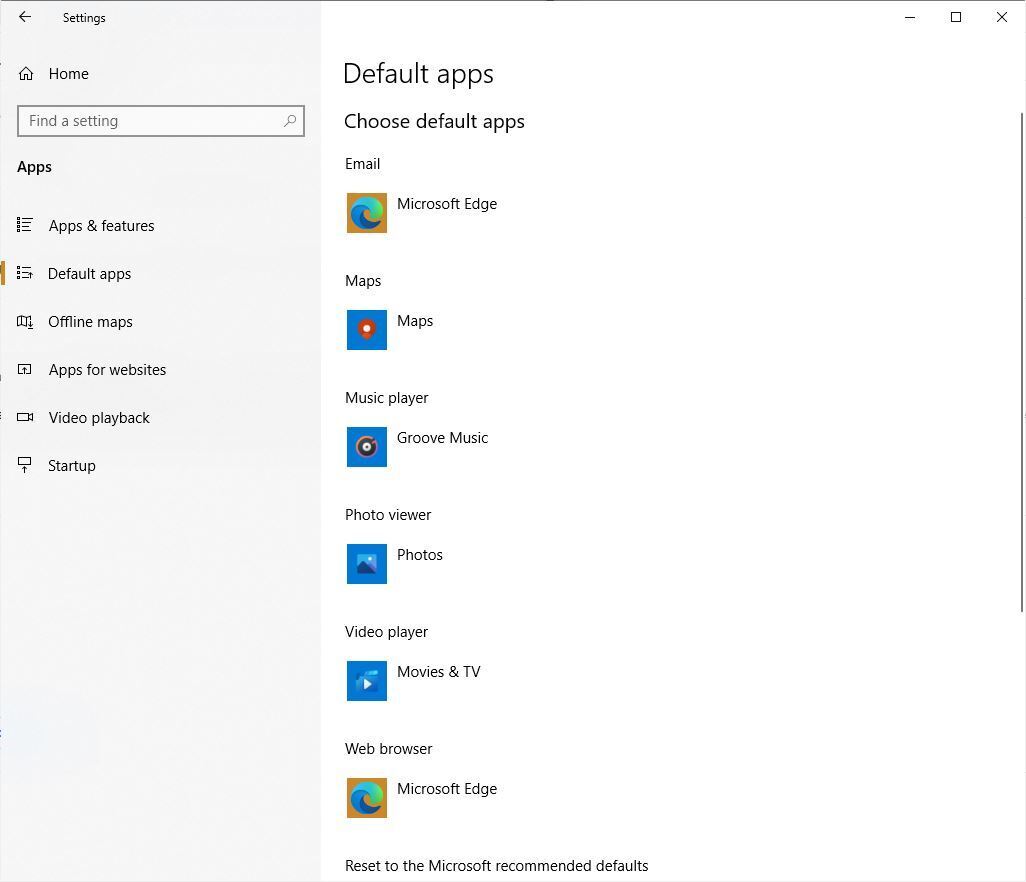 IDG
IDGNavigate to the “Default apps” screen and scroll down.
Near the bottom of the screen, you’ll see Microsoft Edge under the “Web browser” listing. Click the Microsoft Edge icon and you’ll see a pop-up with a list of your installed browsers.
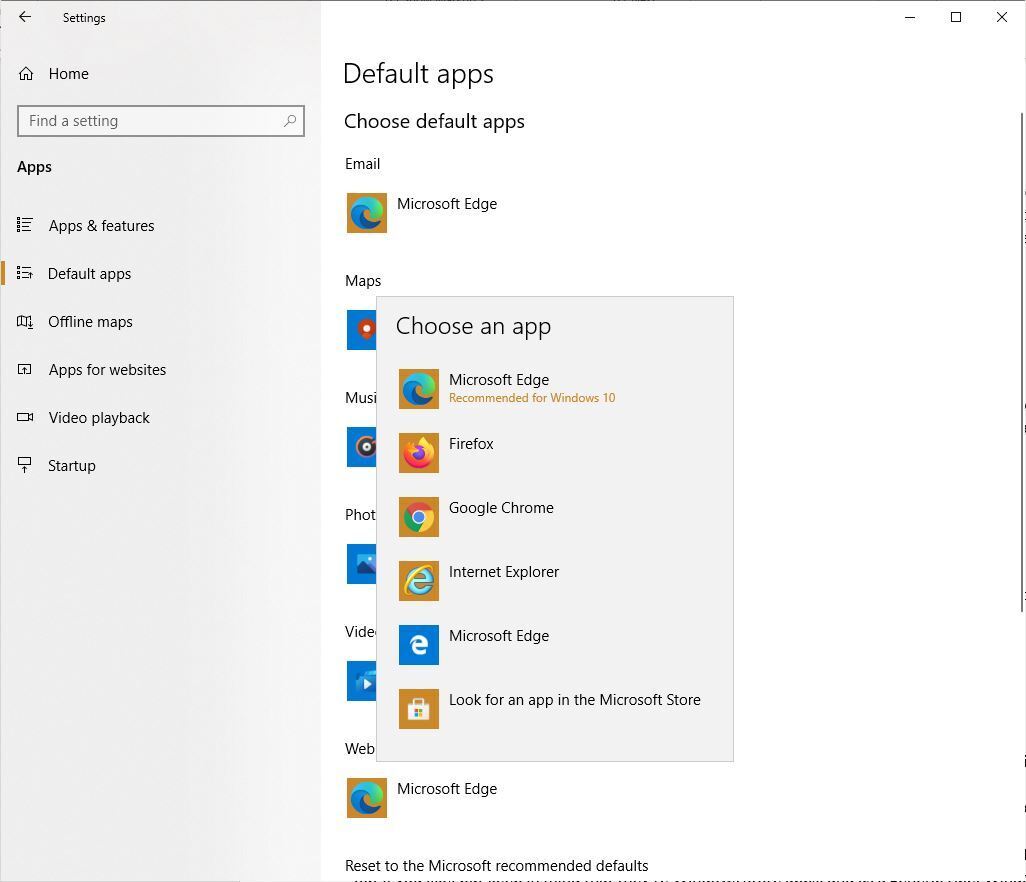 IDG
IDGSelect a different browser to be your default.
(Side note: The pop-up also has a “Look for an app in the Microsoft Store” option, but if you click it, you may not find a popular browser you want to install. Clicking it launches a search of the Windows App Store for the term “http.” When I tried it for this article, the only familiar browser it found was Firefox. Otherwise, there was a motley collection of apps, from file downloaders to an app that dims your Windows background to make it easier to view videos. There are also some little-known browsers listed, such as Super-Fast Browser and BlueSky Browser. Try them out if you like, but keep in mind that they’re Windows Store apps, and as a general rule, Windows Store apps are underpowered compared to desktop apps like Chrome, Firefox, and Opera.)
Click the browser that you’d like to be your default browser. No need to restart; your work is done.
Changing the default browser in Windows 11
In Windows 11, after you’ve installed an alternate browser, click the Start button and then click the Settings icon in the Pinned area. In Settings, select Apps > Default apps, then scroll to the browser you want to make your default — for example, Google Chrome. Click the arrow next to it, and at the top of the screen that appears, click Set default. A checkbox then appears next to “Set default.” To change the default back to Edge, or another browser, scroll to the browser you want to be the default and click Set default.
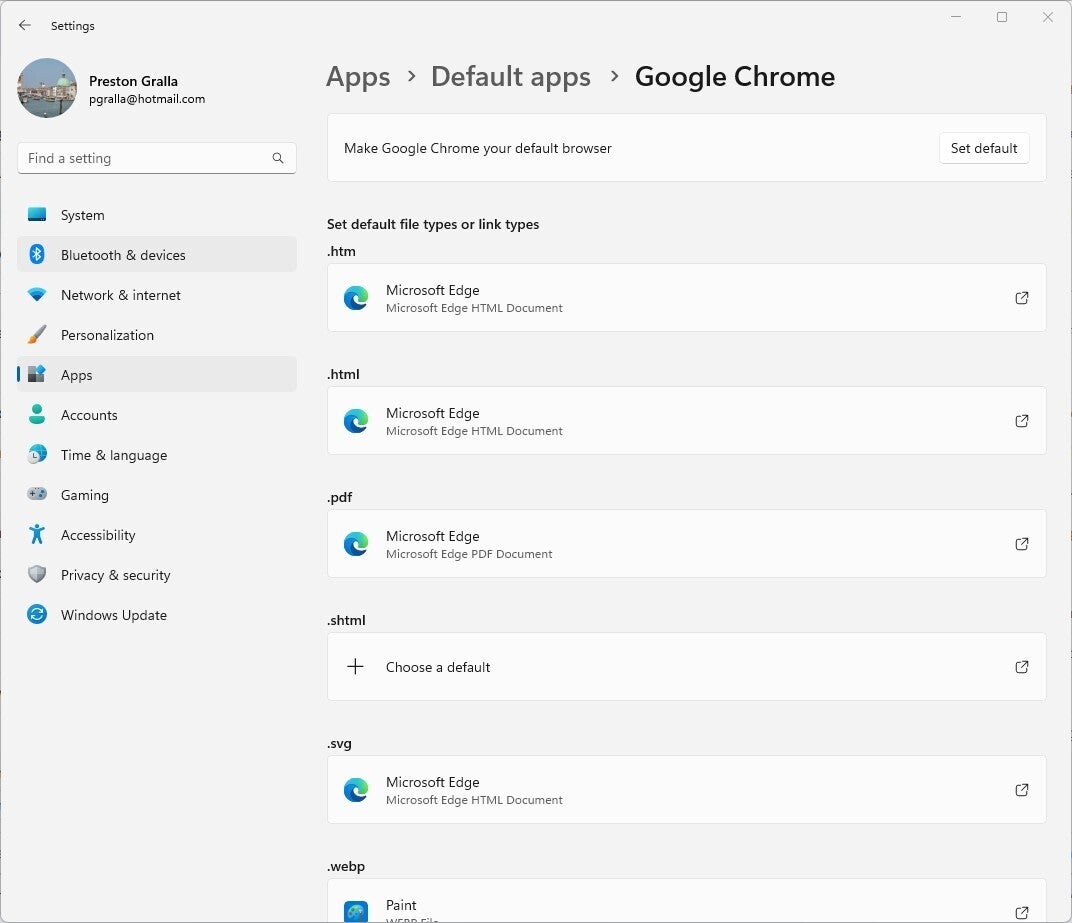 IDG
IDGMaking Google Chrome the default browser in Windows 11. (Click image to enlarge it.)
Some links will still open in Edge
Once you switch the default browser to something other than Edge, clicking most web links in emails, documents, and most other apps will open them in your new default browser. However, some links associated with web browsing will likely still open in Edge — for example, PDF files, some graphics files such as .svg, mailto links, and more. You can hunt down each of those file types and links and change them individually to your new default browser, but it’s going to take you time. Here’s how to do it.
In Windows 10, go to Settings > Apps > Default apps > Choose default apps by file type. On the screen that appears, scroll through all the file types and look for those still associated with Microsoft Edge — for example, .pdf. Click the Microsoft Edge icon to the right of the file type, and from the screen that appears, select your default browser — for example, Google Chrome. You can also choose to have an app from the Microsoft Store run the file. To do it, click Look for an app in the Microsoft Store and follow the directions.
After you’ve done that, go to Settings > Apps > Default apps > Choose default apps by protocol and follow the same steps.
In Windows 11, go to Settings > Apps > Default apps and click your default browser — for example, Google Chrome. Scroll through all the file types and protocols, and click any still associated with Microsoft Edge — for example, .pdf. On the screen that appears, choose Switch Anyway, and then from the pop-up screen, select the app you want to use to open that file. Note that you don’t have to choose your default browser — you can choose another app, such as a PDF reader for .pdf files.
Even after all that, you may still find that clicking links in the Windows interface itself — such as in the Start menu, Windows Search results, or widgets — will open them in Edge. Microsoft recently announced that it’s changing this behavior in Windows 11 so that all links open in the user-set default browser, but only in Europe. The rest of us will be stuck with Edge for Windows system links for the foreseeable future.
This story was originally launched in September 2017 and most recently updated in October 2023.
Copyright © 2023 IDG Communications, Inc.
This story originally appeared on Computerworld

